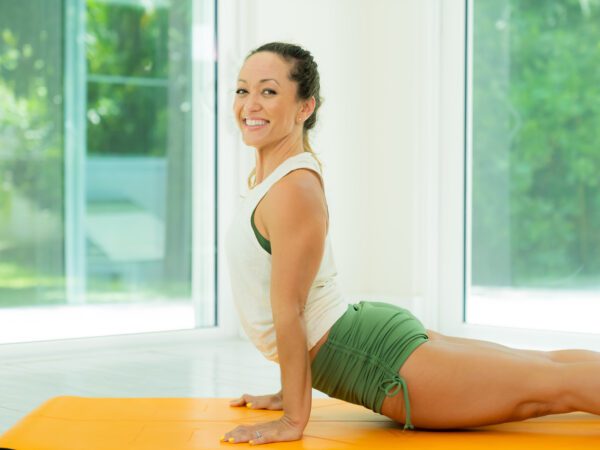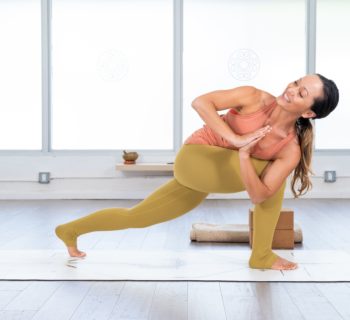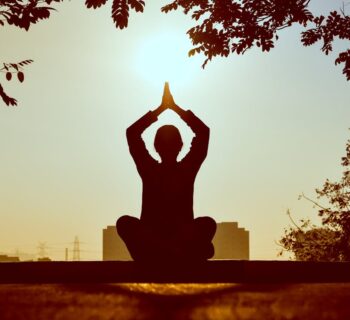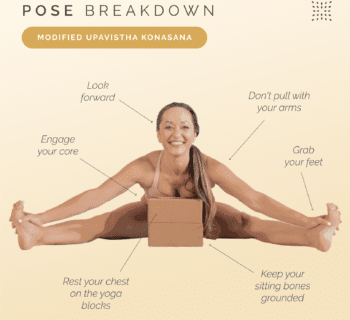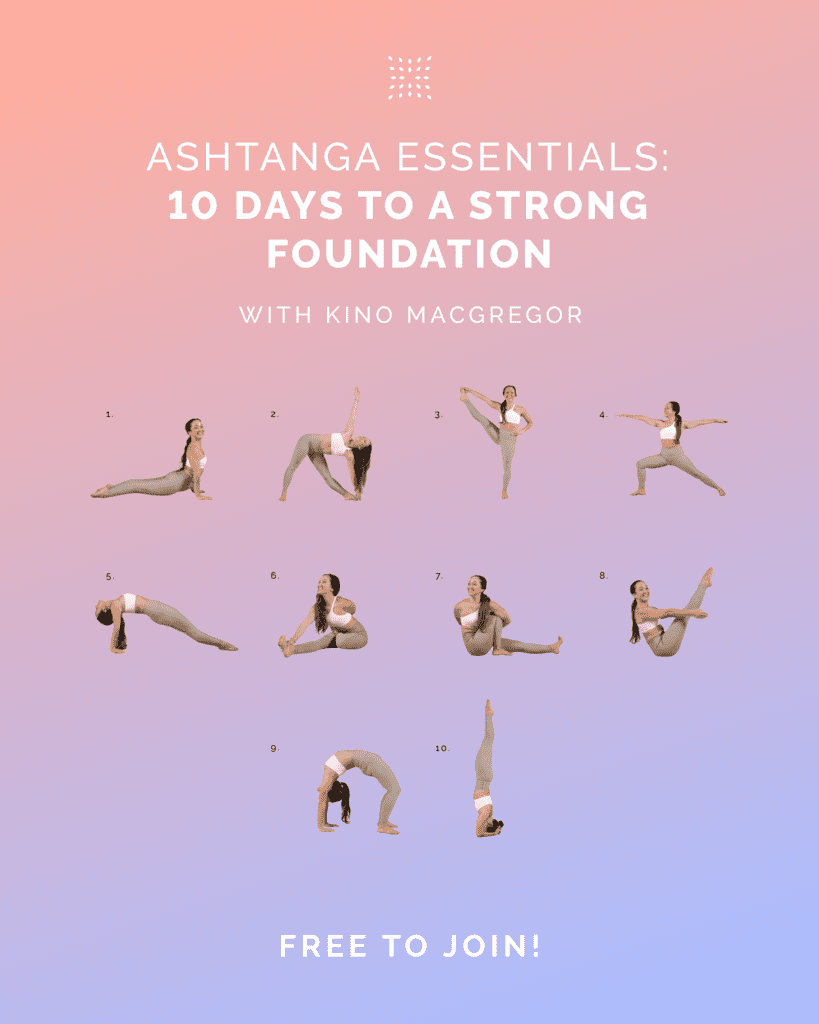Creating a personalized yoga and meditation practice can be incredibly empowering and transformative. By stepping away from guided videos and crafting your own yoga sequences, you gain the freedom to tailor your sessions to your unique needs and preferences. Whether you’re a seasoned yogi or just starting out, developing your own sequences can deepen your understanding of yoga and enhance your practice. In this blog post, we’ll explore the essentials of building your own yoga sequence, offering tips and insights to help you create balanced, effective, and enjoyable routines.
Morning Energizing Sequence
Start your day with an invigorating practice, a dynamic yet grounding yoga sequence, perfect for all levels. Begin with several rounds of surya namaskar A(sun salutations) to awaken and energize your entire body, allowing your breath to set the rhythm. Then follow up with sun salutation B.
The sun salutations are a set sequence of poses. Once you memorize them, this sequence of poses can be the foundation of your yoga practice.
Sun Salutation A Postures
Sun Salutation A, also known as Surya Namaskar A, is a fundamental sequence of asanas (postures) in yoga. It is often used as a warm-up at the beginning of a yoga practice. Here are the steps in the sequence:
- Mountain Pose (Tadasana): Stand tall with feet together, arms at your sides.
- Upward Salute (Urdhva Hastasana): Inhale and raise your arms overhead, palms touching.
- Standing Forward Bend (Uttanasana): Exhale and hinge at your hips, bringing your hands to the floor or shins.
- Halfway Lift (Ardha Uttanasana): Inhale and lift your torso halfway up, lengthening your spine.
- Four-Limbed Staff Pose (Chaturanga Dandasana): Exhale, step or jump back into a plank position and lower down halfway.
- Upward-Facing Dog (Urdhva Mukha Svanasana): Inhale and roll over your toes, lifting your chest and thighs off the ground.
- Downward-Facing Dog (Adho Mukha Svanasana): Exhale and lift your hips up and back, forming an inverted V-shape.
- Halfway Lift (Ardha Uttanasana): Inhale and step or jump to the front of your mat, lifting your torso halfway up.
- Standing Forward Bend (Uttanasana): Exhale and fold forward.
- Upward Salute (Urdhva Hastasana): Inhale and sweep your arms up overhead.
- Mountain Pose (Tadasana): Exhale and bring your arms down to your sides, returning to the starting position.
This sequence is typically repeated multiple times to build heat and prepare the body for the rest of the practice.
Sun Salutation B
Sun Salutation B, also known as Surya Namaskar B, is a slightly more advanced sequence of asanas (postures) in yoga. It includes all the poses in Sun Salutation A with additional postures. Here are the steps in the sequence:
- Mountain Pose (Tadasana): Stand tall with feet together, arms at your sides.
- Chair Pose (Utkatasana): Inhale and bend your knees, raising your arms overhead, palms facing each other.
- Standing Forward Bend (Uttanasana): Exhale and hinge at your hips, bringing your hands to the floor or shins.
- Halfway Lift (Ardha Uttanasana): Inhale and lift your torso halfway up, lengthening your spine.
- Four-Limbed Staff Pose (Chaturanga Dandasana): Exhale, step or jump back into a plank position and lower down halfway.
- Upward-Facing Dog (Urdhva Mukha Svanasana): Inhale and roll over your toes, lifting your chest and thighs off the ground.
- Downward-Facing Dog (Adho Mukha Svanasana): Exhale and lift your hips up and back, forming an inverted V-shape.
- Warrior I (Virabhadrasana I): Inhale and step your right foot forward between your hands, pivot your back foot flat, and raise your arms overhead, palms facing each other. Hold the pose for one breath.
- Four-Limbed Staff Pose (Chaturanga Dandasana): Exhale, place your hands on the floor, step your right foot back, and lower down halfway.
- Upward-Facing Dog (Urdhva Mukha Svanasana): Inhale and roll over your toes, lifting your chest and thighs off the ground.
- Downward-Facing Dog (Adho Mukha Svanasana): Exhale and lift your hips up and back, forming an inverted V-shape.
- Warrior I (Virabhadrasana I): Inhale and step your left foot forward between your hands, pivot your back foot flat, and raise your arms overhead, palms facing each other. Hold the pose for one breath.
- Four-Limbed Staff Pose (Chaturanga Dandasana): Exhale, place your hands on the floor, step your left foot back, and lower down halfway.
- Upward-Facing Dog (Urdhva Mukha Svanasana): Inhale and roll over your toes, lifting your chest and thighs off the ground.
- Downward-Facing Dog (Adho Mukha Svanasana): Exhale and lift your hips up and back, forming an inverted V-shape. Hold this pose for five breaths.
- Halfway Lift (Ardha Uttanasana): Inhale and step or jump to the front of your mat, lifting your torso halfway up.
- Standing Forward Bend (Uttanasana): Exhale and fold forward.
- Chair Pose (Utkatasana): Inhale and bend your knees, raising your arms overhead, palms facing each other.
- Mountain Pose (Tadasana): Exhale and straighten your legs, bringing your arms down to your sides, returning to the starting position.
This sequence is often repeated multiple times to build strength, flexibility, and heat in the body.
Sun Salutations, or Surya Namaskar, are essential in a vinyasa flow, boosting your heart rate and enhancing flexibility. This dynamic sequence forms the backbone of many yoga routines.
By embracing this practice, you can create a seamless transition from one asana to the next, embodying a dance of breath and movement, fostering both mindfulness and vitality.
Just 10 Sun Salutations daily can burn roughly 139 calories, akin to light aerobics.
As you progress, you’ll find deeper strength, flexibility, and mental clarity, making them indispensable in any yogi’s repertoire. Embark on this journey and let the sun’s energy enliven your spirit through these cyclical sequences. Here is a video you can watch to see how to put the postures of the sun salutations together. Once you memorize the sequence there will be no need to practice with videos.
Standing Poses
Standing poses are integral in yoga as they cultivate strength, stability, and alignment throughout the body.
Mountain Pose (Tadasana): The foundation for all standing poses; fosters grounding and alignment.
Warrior I (Virabhadrasana I): Enhances balance and builds stamina in the legs.
Warrior II (Virabhadrasana II): Opens the hips and chest while cultivating focus.
Chair Pose (Utkatasana): Strengthens the thighs and back muscles, promoting endurance.
Tree Pose (Vrksasana): Improves balance and concentration, grounding the practitioner.
Incorporating these poses into your practice builds a solid foundation for overall strength and focus.
To maximize the benefits, maintain steady breathwork and proper form throughout each stance.
Standing poses can be performed as a cohesive sequence or individually tailored to specific practice goals. Again the following video lesson is an example of how to build a practice based on standing poses.
Gentle Twists
Gentle twists in yoga offer myriad benefits, such as stimulating digestion, relieving tension in the spine, and enhancing detoxification. They also enhance flexibility of the back.
Starting with Seated Spinal Twist (Ardha Matsyendrasana), this pose is great for releasing built-up tension.
You can transition into Supine Spinal Twist (Supta Matsyendrasana) for a deeper stretch, which also aids in relaxing the lower back and hips.
Twists are best practiced slowly to avoid strain, holding each twist for at least five breaths to deepen the stretch and maximize benefits. Maintain awareness of your breath, exhaling as you twist deeper, to safely engage the muscles.
Midday Focus Boost
Integrate a yoga sequence of revitalizing poses, perfect for overcoming midday sluggishness, without relying on external guidance, by including beginner sequences.
Begin with a few rounds of sun salutations (surya namaskar) to energize your body and refocus your mind.
Incorporate twists in your yoga practice with revolved chair pose (parivrtta utkatasana) and revolved crescent lunge (parivrtta anjaneyasana). Both poses invigorate your core and improve spinal mobility. Finish with standing forward bend (uttanasana) for a calming stretch, helping to relieve tension and clear your mind for the rest of the day.
Seated Forward Bends
Seated Forward Bends are essential for deep hamstring stretching and overall spinal alignment, providing both flexibility and mental calm.
Ensure you keep a slight bend in your knees if your hamstrings are tight.
Imagine gently elongating your spine forward with every exhale, allowing a soothing stretch and focusing on breathwork and inner awareness.
These poses, such as Paschimottanasana (Seated Forward Bend) and Janu Sirsasana (Head-to-Knee Pose), create release in your lower back and improve digestion.
Hold each posture for a few breaths—around 5 to 10—to fully experience the benefits and achieve the serenity and stretch you seek.
Hip Openers
Hip openers are transformative for flexibility and tension release.
Begin with poses like Butterfly (Baddha Konasana) and Pigeon Pose (Eka Pada Rajakapotasana). These asanas target the deep muscles in your hips, aiding in
alleviating tightness and improving range of motion. Additionally, they can work wonders in decompressing your lower back and enhancing overall posture.
Frog Pose is another great hip opener.
Ensure you are maintaining mindful breathing throughout your practice – inhaling deeply to find length and exhaling to sink deeper into the stretch – as this helps facilitate a more calming and connected experience.
Holding each pose for several breaths, ideally 5 to 10, allows you to deepen the stretch progressively. This practice not only fosters flexibility but also encourages a serene, meditative state, making your yoga practice both physically and mentally enriching.
Shoulder Releases
Relieving shoulder tension is crucial, especially for those with desk jobs or stress-induced stiffness.
To start, consider incorporating gentle stretches like Thread the Needle and Eagle Arms. These poses facilitate deep shoulder releases, encouraging the flow of prana (life energy) throughout the upper body. This not only eases physical discomfort but also promotes emotional liberation by targeting areas where stress tends to accumulate.
Additionally, Puppy Pose offers a passive, yet effective shoulder opener. By extending your arms forward and relaxing into the pose, you can experience a significant release in your shoulders and upper back, simultaneously lengthening and decompressing the spine.
Experiment with dynamic movements such as Shoulder Rolls and Arm Circles to complement these poses. These movements boost circulation, lubricate the shoulder joints, and enhance the overall effectiveness of your practice. Incorporating these sequences regularly can significantly improve range of motion, alleviate chronic tension, and cultivate a profound sense of ease and wellbeing in your daily life.
Evening Relaxation Routine
An evening relaxation routine helps unwind from the day’s stresses, preparing your body and mind for restful sleep.
To get started, gentle stretches like Seated Forward Bend (Paschimottanasana) help to elongate the spine, calm the nervous system, and release tension in the hamstrings and lower back. Follow this with the soothing Cat-Cow Pose (Marjaryasana-Bitilasana) to promote spinal flexibility and deepen your connection to your breath.
Finish with Legs Up the Wall Pose (Viparita Karani) and Corpse Pose (Savasana) to transition smoothly into a state of deep relaxation.
Restorative Poses
Restorative yoga poses are gentle, passive, and deeply relaxing, making them perfect for unwinding and rejuvenating.
- Child’s Pose (Balasana): Relieves tension in the back, shoulders, and chest.
- Reclining Bound Angle Pose (Supta Baddha Konasana): Opens the hips and groin, promoting relaxation.
- Legs Up the Wall (Viparita Karani): Reduces stress and improves circulation.
- Supported Bridge Pose (Setu Bandhasana): Opens the chest and stretches the spine.
- Corpse Pose (Savasana): Cultivates mindfulness and deep relaxation.
These poses require minimal effort and can be held for extended periods to maximize their calming benefits.
Incorporate props like bolsters, blankets, and blocks to enhance comfort and support.
Gentle Backbends
Gentle backbends can invigorate your spine and uplift your mood while being accessible to yoga practitioners at all levels.
- Cat-Cow Pose (Marjariasana-Bitilasana): Flowing between these poses warms up the spine and increases flexibility.
- Bridge Pose (Setu Bandhasana): Lengthens the spine and opens the chest gently.
- Sphinx Pose (Salamba Bhujangasana): A mild backbend that strengthens your lower back.
- Locust Pose (Salabhasana): Strengthens the back body and opens the chest incrementally.
- Camel Pose (Ustrasana) with modifications: Use blocks or bolster to support your lower back and avoid strain.
Incorporating these backbends into your practice can alleviate back tension and increase spinal mobility.
Focus on breath control, ensuring each inhalation expands the chest and each exhalation releases any tension.
Listen to your body’s signals, moving into and out of each pose mindfully to maintain a safe practice.
Pranayama Breathing
Pranayama, or breath control, enhances your yoga practice by harmonizing mind and body, increasing oxygen flow, and reducing stress.
- Ujjayi Breath: This ‘victorious breath’ creates a soothing sound, promoting focus and calm.
- Nadi Shodhana: Alternate nostril breathing balances your energy channels.
- Kapalabhati: A forceful exhalation practice that invigorates and detoxifies.
- Bhramari Breath: The ‘humming bee’ breath soothes the nervous system.
- Anulom Vilom: Purifies energy pathways and calms the mind.
Each Pranayama technique offers unique benefits to enhance mental clarity and physical vitality.
Integrate these breathing exercises into your daily routine for optimal inner peace and well-being.
Always practice pranayama with awareness, attuning yourself to your breath to foster a deeper connection with your practice.
Full Body Stretch
Engage in a full body stretch sequence to unlock flexibility, alleviate muscle tension, and rejuvenate your entire body. Start with standing poses like Mountain Pose (Tadasana) and flow into Downward-Facing Dog (Adho Mukha Svanasana). Transition gracefully into Sun Salutations (Surya Namaskar), which incorporate forward bends, lunges, and back bends, ensuring a comprehensive stretch for every major muscle group. Finish with restorative poses such as Child’s Pose (Balasana) and Corpse Pose (Savasana) to integrate the benefits of your practice and achieve deep relaxation.
Stretching the Legs
Stretching your legs in yoga is essential for improving flexibility, reducing tension, and enhancing overall lower body strength. Let’s explore some effective leg-stretching poses.
Standing Forward Bend (Uttanasana) is excellent for stretching the hamstrings.
Downward-Facing Dog (Adho Mukha Svanasana) stretches the calves, hamstrings, and back.
Wide-Legged Forward Bend (Prasarita Padottanasana) opens the hips and stretches the inner thighs.
Pigeon Pose (Eka Pada Rajakapotasana) offers an intense stretch for the hip flexors and glutes.
Incorporate these poses into your practice regularly, holding each one for several breaths to deepen the stretch and promote flexibility in your lower body.
Engaging the Core
Engaging your core during yoga practice isn’t just about developing abs; it’s about creating a solid foundation for all your movements. A strong core supports balance, stability, and a deeper connection to your practice.
- Cat-Cow Pose (Marjaryasana-Bitilasana) helps activate the core.
- Flow through several rounds, focusing on the contraction and release.
- Plank Pose (Phalakasana) is another powerful core engager. Hold this pose, ensuring your body forms a straight line.
- Boat Pose (Navasana) simultaneously strengthens the core and enhances stability. Engage deeply here.
These foundational poses not only build strength but also enhance overall body awareness. Making core engagement a habit ensures a resilient and balanced practice.
Releasing Tension
Sometimes, tight muscles need deliberate attention.
One effective sequence starts with Child’s Pose (Balasana). This pose encourages gentle stretching of the lower back and hips, allowing for a calming release of tension. Next, move into Cat-Cow Pose (Marjaryasana-Bitilasana) to dynamically loosen the spine and shoulders, helping to ease built-up stress.
Follow this with Standing Forward Bend.
Feel the stretch in your hamstrings and lower back. This inversion pose allows blood flow to the brain, promoting mental clarity.
Finally, finish with Legs Up the Wall (Viparita Karani) to improve circulation and provide deep relaxation. Utilizing these simple yet powerful poses regularly can help melt away the physical stresses of daily life.
Incorporating these yoga sequences into your daily routine can significantly enhance your energy levels and overall well-being. These sequences offer a variety of poses to keep your practice fresh and invigorating. Remember, the key to a successful yoga practice is consistency and listening to your body. So, roll out your mat, embrace the flow, and let these sequences energize your life.
Are you looking for more guidance on your yoga journey? Sign up for Omstars to get access to thousands of yoga classes in the comfort of your own home. Click here to start your subscription.



